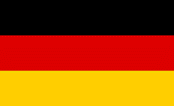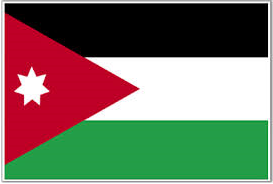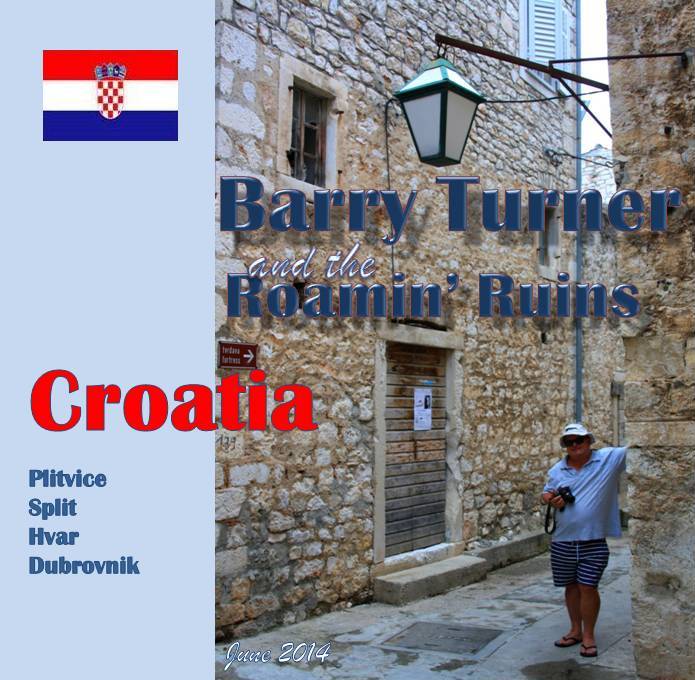
There were to be two parts to our visit to Croatia - the mother nature of the Plitivice Lakes and the history of Split and Dubrovnik. A lack of any detailed knowledge of Croatia set expectations for an austere and war-scarred country populated by grizzled farmers on rusty tractors albeit with tourism hot-spots on the many islands along the coast. After all Tito's Yugoslavia was communist and Croatia's 1991 War Of Independence was very recent.
I don't like studying too much detail of new destinations - I like surprises. And Croatia was certainly that. Clean, green and functional, 1st world facilities without the downside of rampant graffiti, over-development, junk food outlets and their fatty-boombah customers. If there was a downside to the visit it was that it wasn't edgy at all. Albania here we come?
Plitvice Lakes
Bucket List Rating 



- More Lakes photos
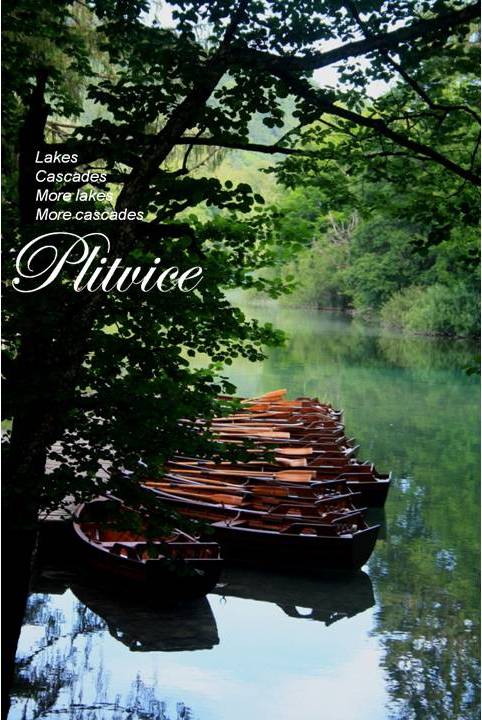 >Calm and peaceful
>Calm and peaceful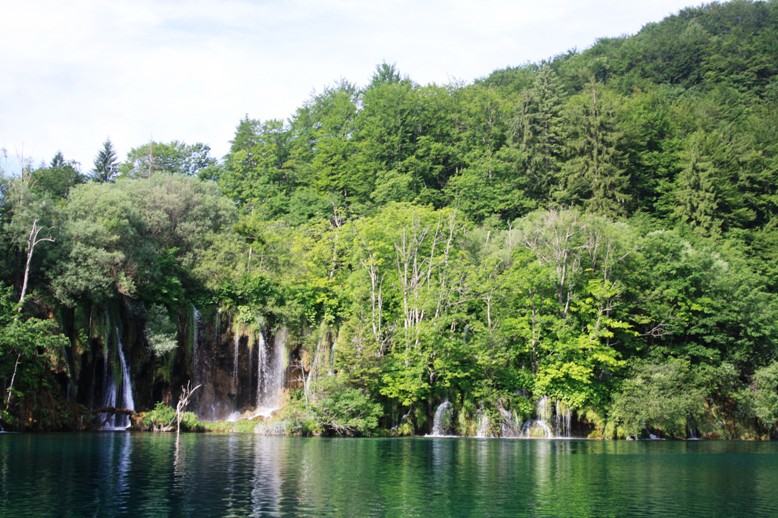 >Waterfalls tumble out of the surrounding forest
>Waterfalls tumble out of the surrounding forest Typical view from the water level walkways
Typical view from the water level walkways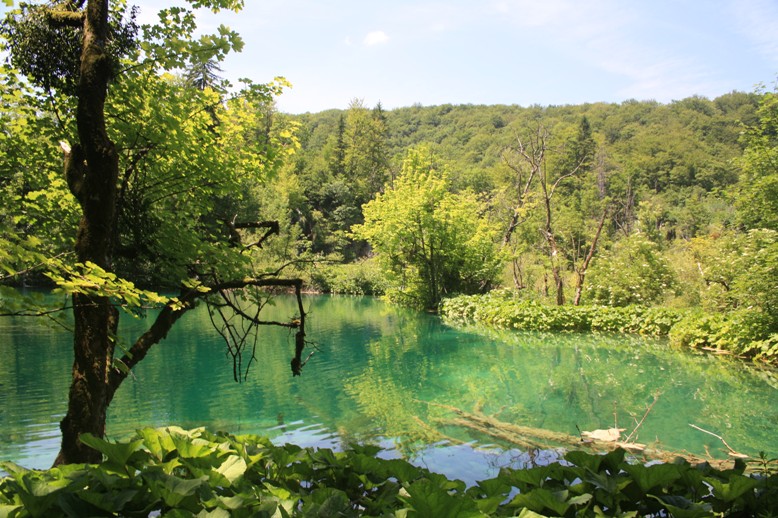 Backwater perspective
Backwater perspective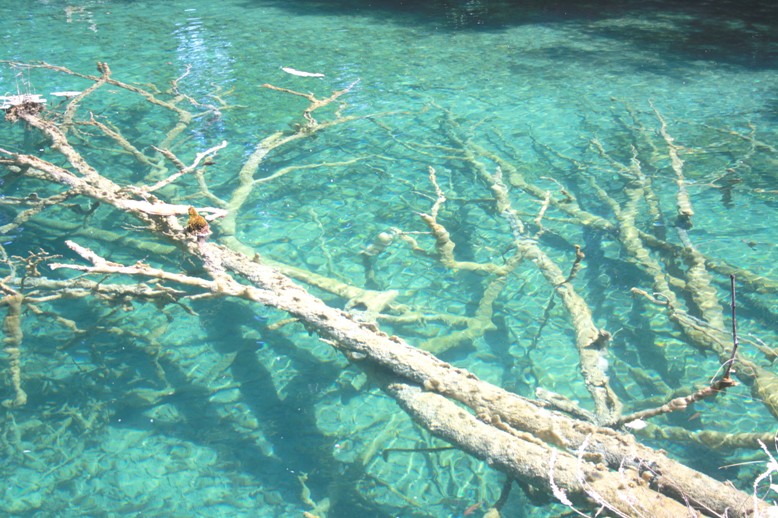 Clear, clear water
Clear, clear water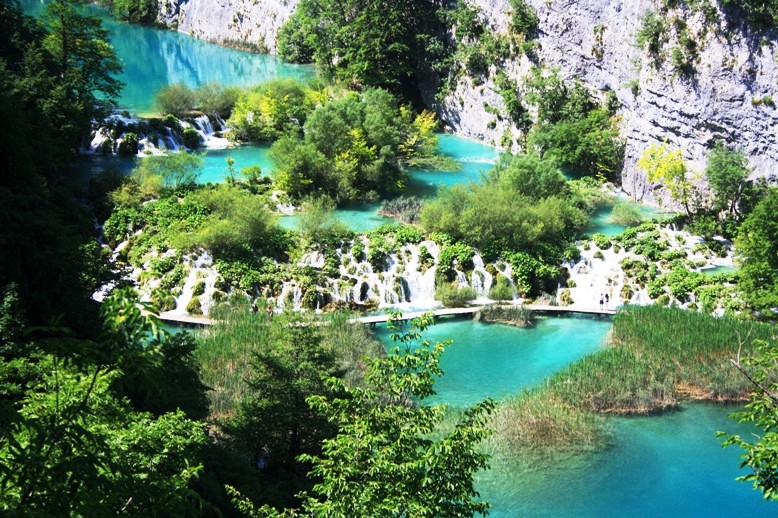 View from an access track
View from an access track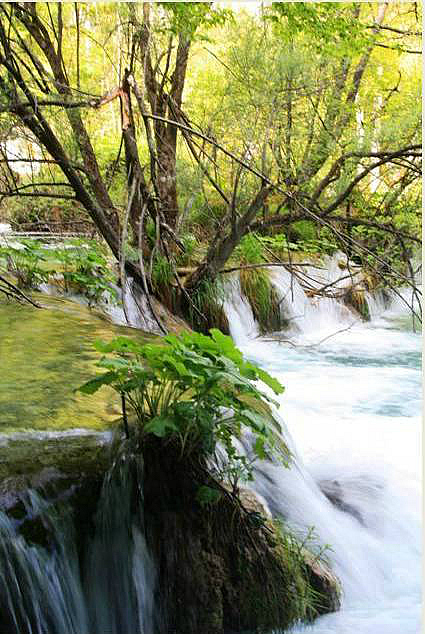 Water cascades through the forests
Water cascades through the forests The Big Waterfall.
The Big Waterfall. Close up - beware wet cameras
Close up - beware wet cameras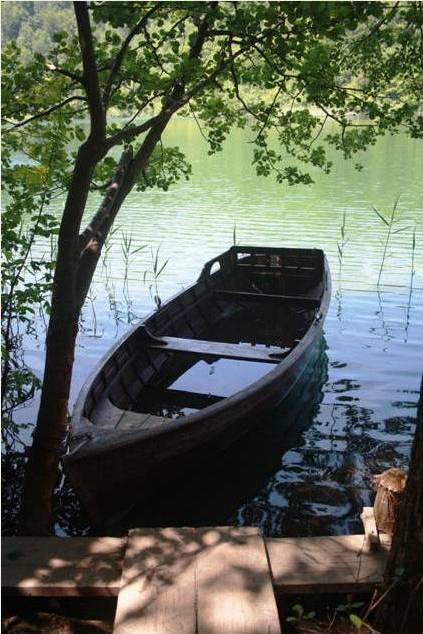 Half-sunk rowboat left there for decoration perhaps
Half-sunk rowboat left there for decoration perhaps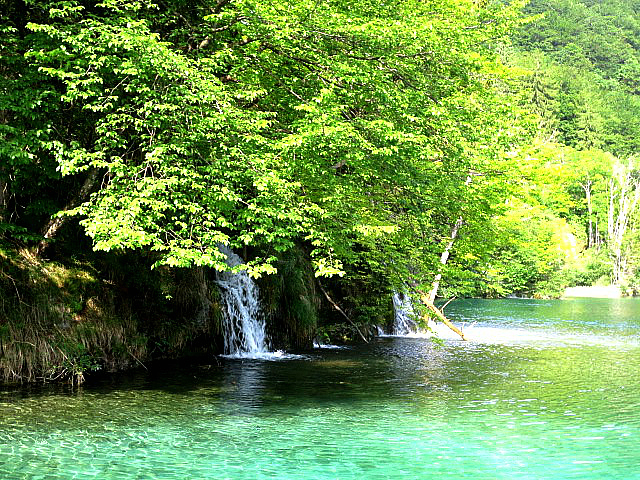 More cascades
More cascades Even more cascades
Even more cascades Placid lakes of calm, very blue and clear water formed by the cascades
Placid lakes of calm, very blue and clear water formed by the cascades Cascades
Cascades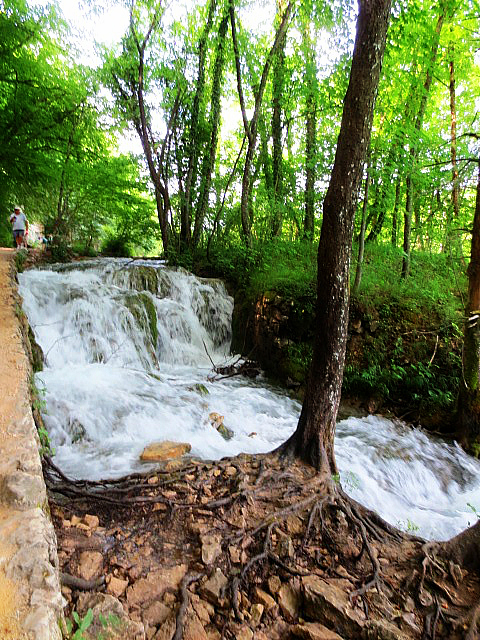 Yep....still more cascades
Yep....still more cascades Lots of cascades
Lots of cascades Cascades of all configurations
Cascades of all configurations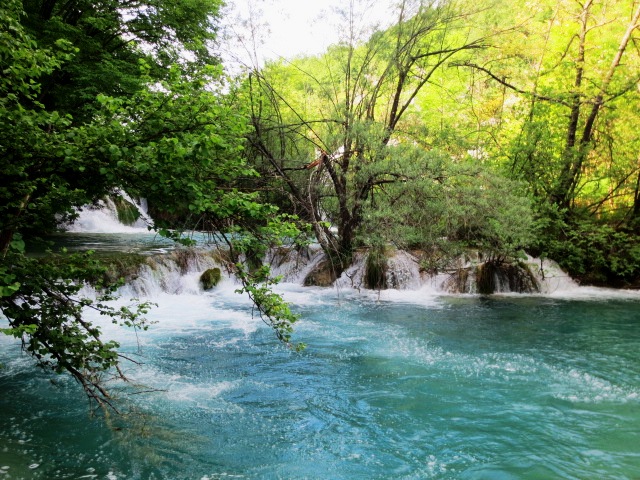 More...FFS!
More...FFS!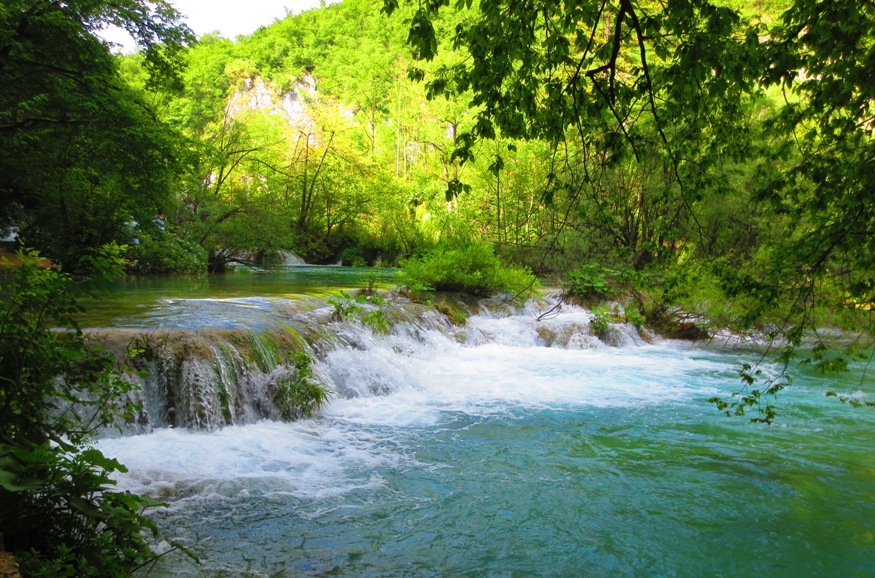 Come on....cascades
Come on....cascades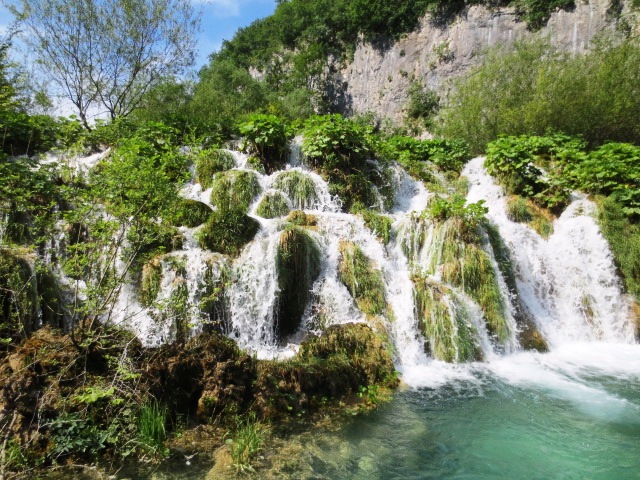 Enough already!
Enough already!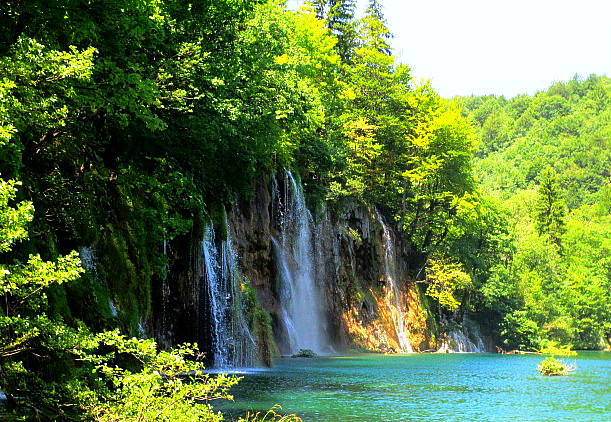 You moused over it, don't blame me
You moused over it, don't blame me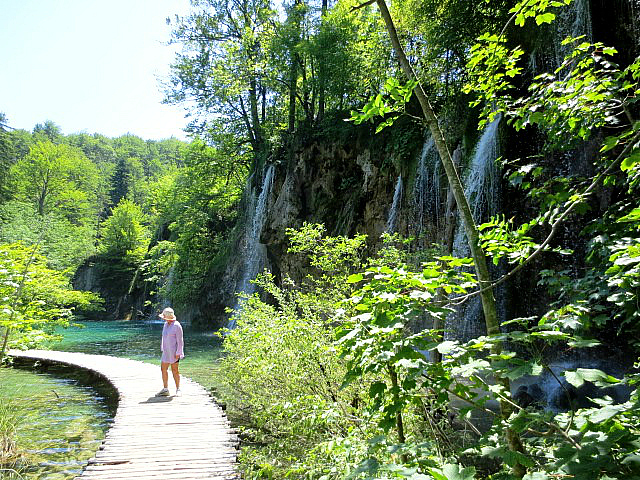 Not a cascade. The walkway is just tree branches sawn down the middle. Very sturdy though
Not a cascade. The walkway is just tree branches sawn down the middle. Very sturdy though Last one
Last one Photo: Chris
Photo: Chris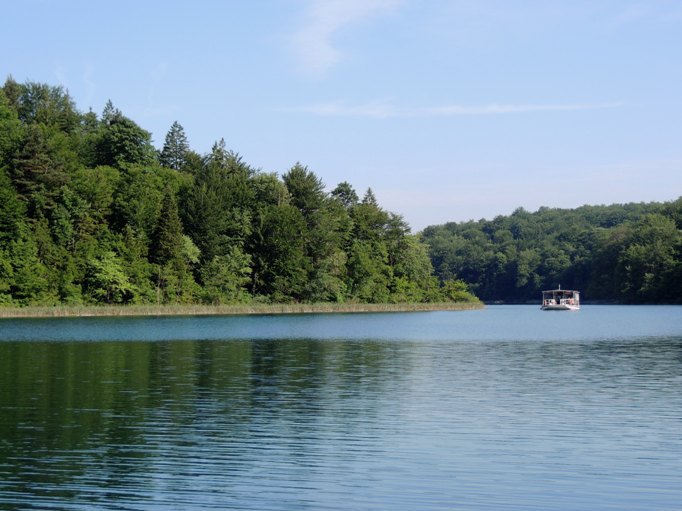 Photo: Chris
Photo: Chris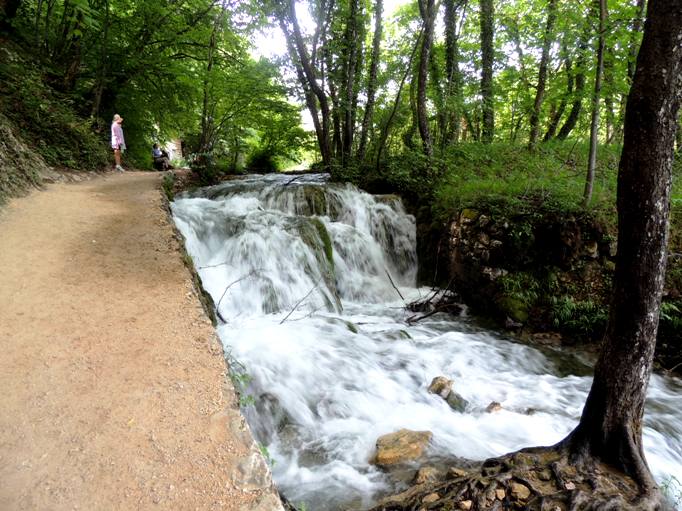 Photo: Chris
Photo: Chris Photo: Chris
Photo: Chris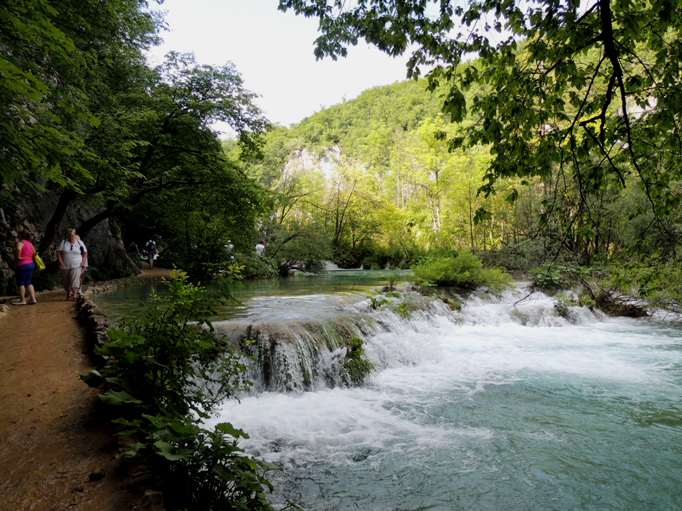 Photo: Chris
Photo: Chris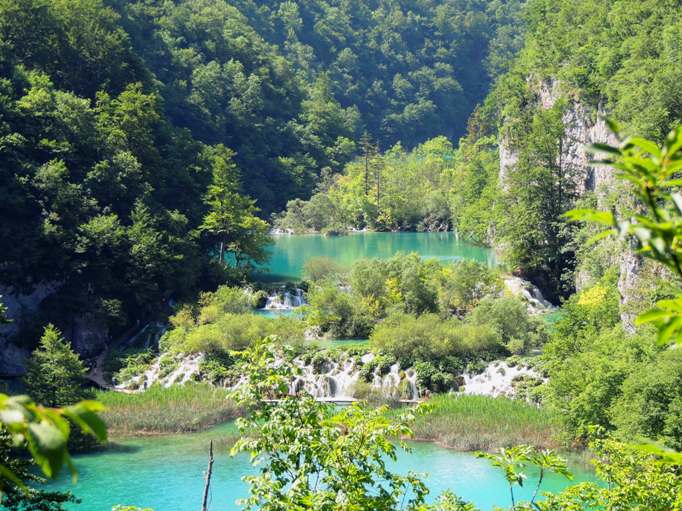 Photo: Chris
Photo: Chris
A 6 seater people mover delivered us to Plitvice from the Trieste railway station in Italy via several hours' drive through wooded mountains of Slovenia and and a zig-zagging descent from a high-speed motorway to the 1st pit-stop at Opatija on the northern Croation coast - a prosperous, Riviera-looking place indeed. Later, after diverting off a motorway towards Plitvice our driver got a tad misdirected by his sat-nav and we found ourselves in backroad countryside of old-fashioned farms and small villages of Kamenica and the onomatopoeiacly named Slunj - and the few and only sights we had of damage from the 1991 war. A few shot-up walls with obvious bullet holes and some burnt out, over-grown farm houses. An accidental but worthwhile diversion through pretty scenery (Slunj excepted).
The Lakes
Limestone and chalk have built up as natural travertine barriers that have created a series of cascades, lakes and backwaters that form the UNESCO-protected Plitvice Lakes, now within the boundaries of a national park in the middle of Croatia. Despite the tourist hordes even in low season 1 cigarette butt was the total litter count on our circumnavigation of the Lakes. Ferries and buses hauling the multitudes to the various drop-off points are electric and it's obvious great care is taken to look after the whole environment.
Split
Bucket List Rating 
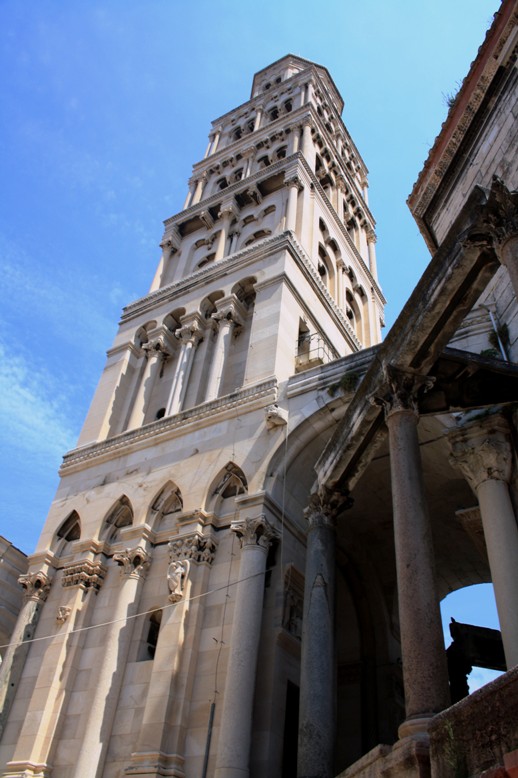
- More Split photos
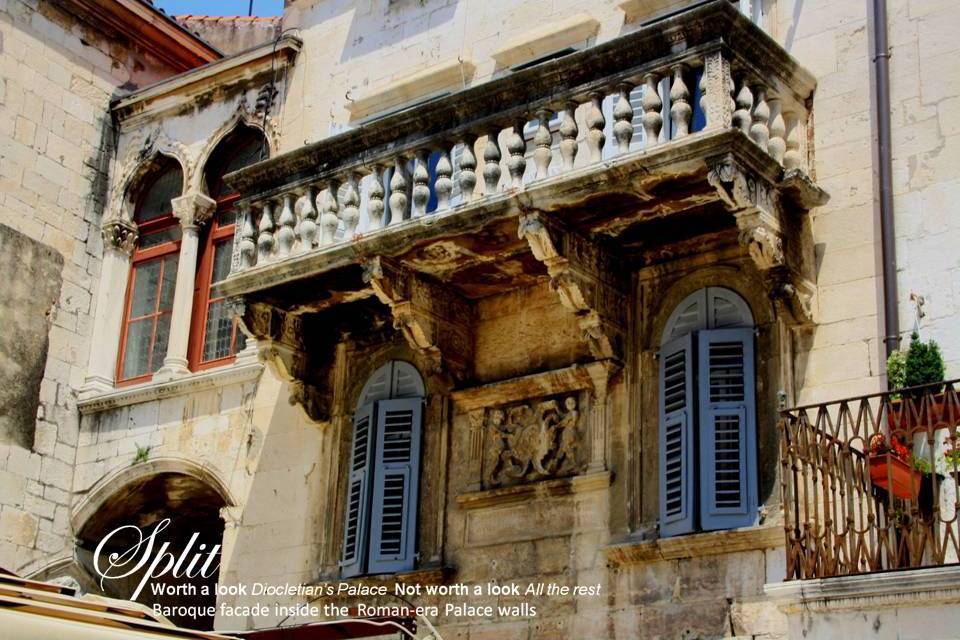 Very medieval on the inside of the walls
Very medieval on the inside of the walls Inside Diocletian's Palace. Photo: Bruce
Inside Diocletian's Palace. Photo: Bruce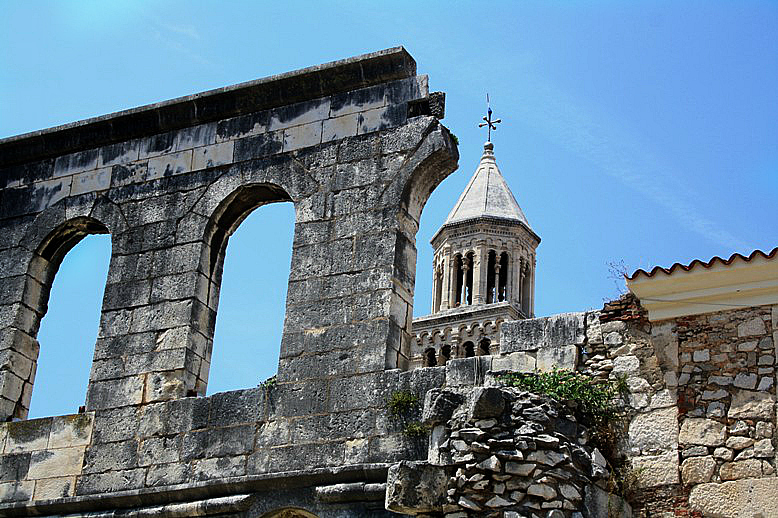 Very Roman from the outside
Very Roman from the outside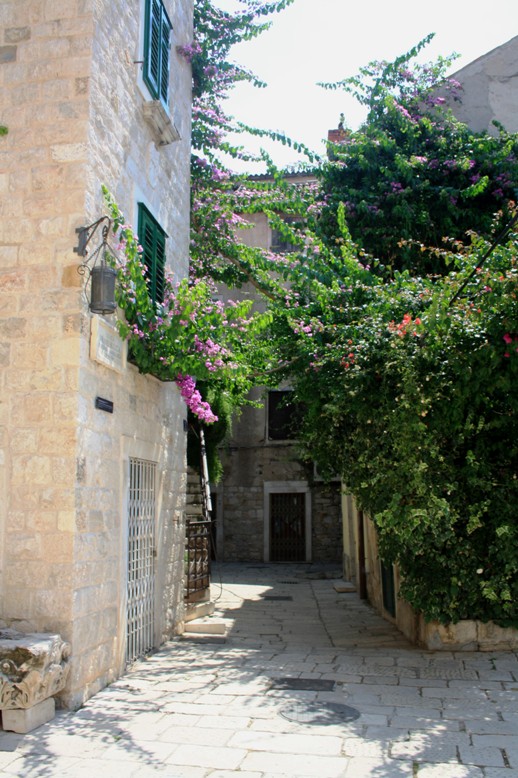 People live and work within the old city
People live and work within the old city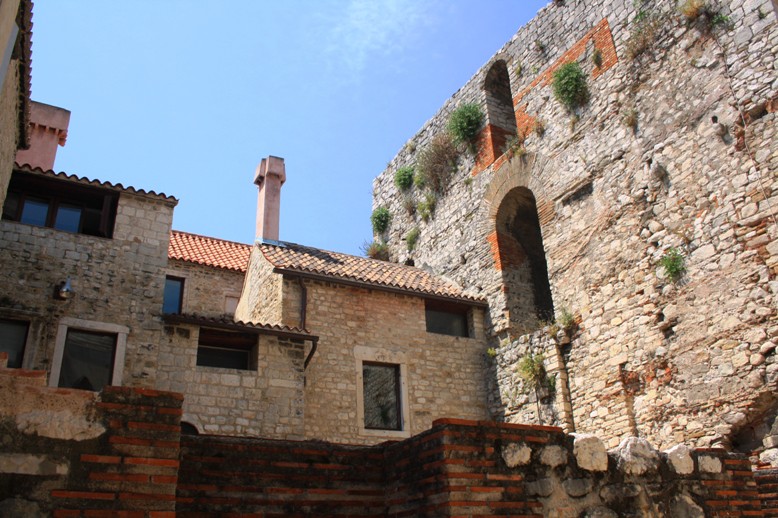 The original Roman walls of the Palace
The original Roman walls of the Palace Bustling but you can still sense the Medieval atmosphere
Bustling but you can still sense the Medieval atmosphere Another one
Another one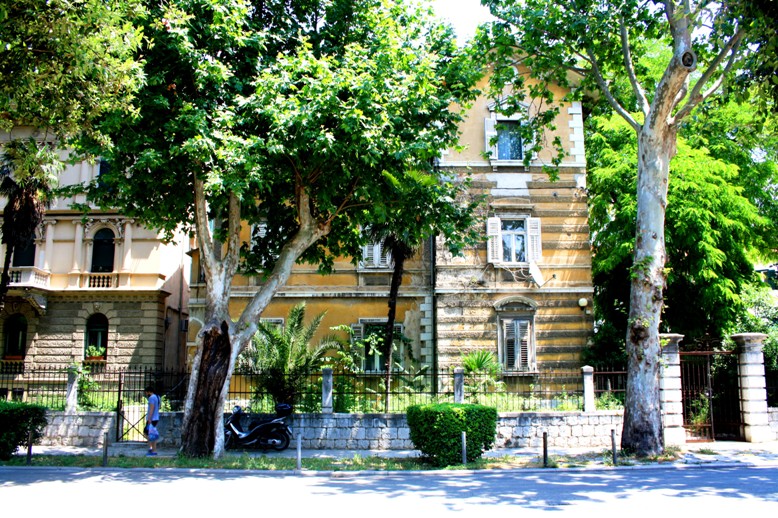 Nice house near the Palace
Nice house near the Palace Nice too
Nice too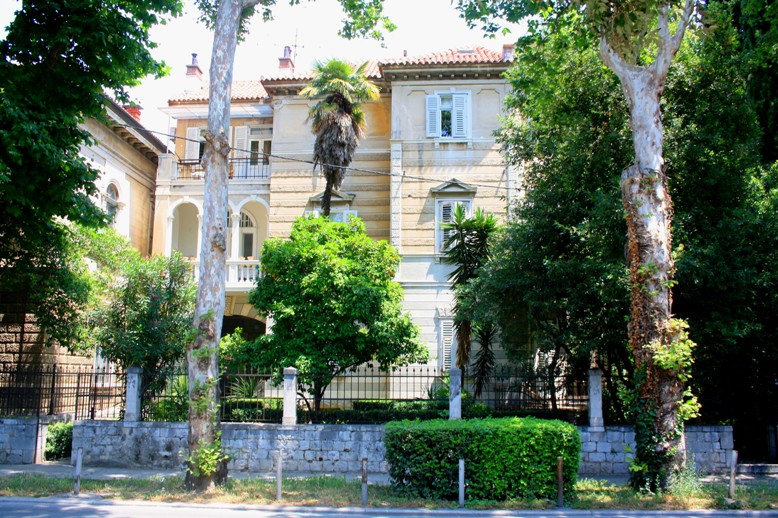 Another one
Another one Bell Tower - circa 1100AD
Bell Tower - circa 1100AD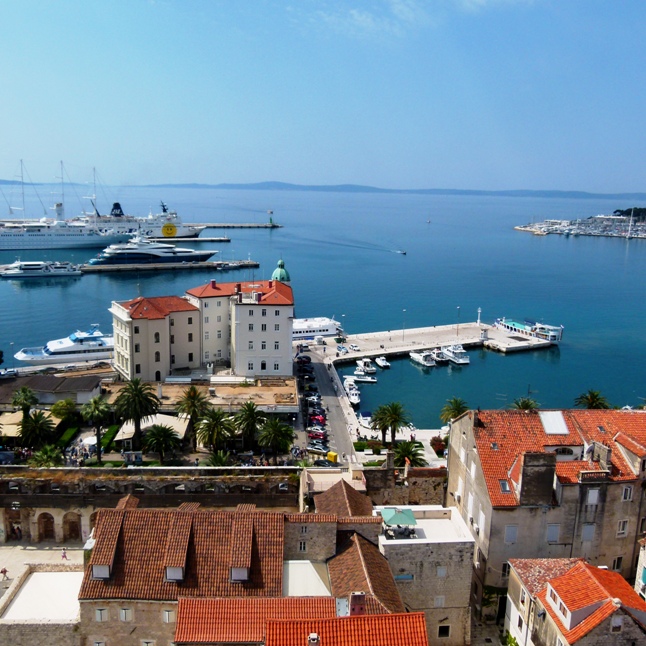 A small part of the port at Split from the Bell Tower. Photo: Bruce
A small part of the port at Split from the Bell Tower. Photo: Bruce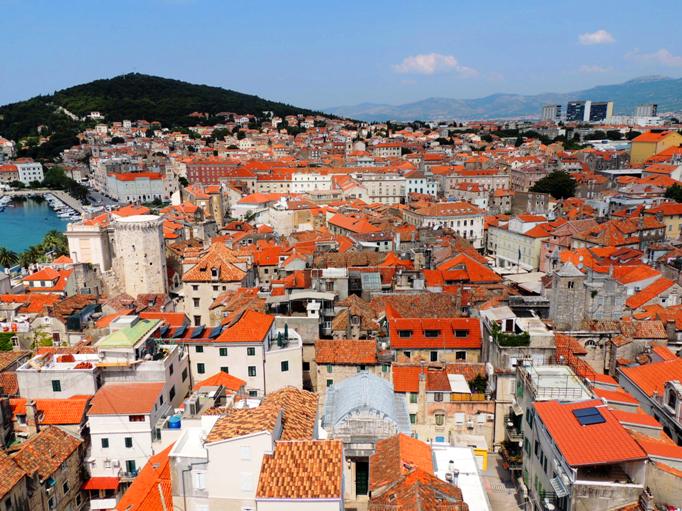 A nicer angle of Split from the Bell Tower at Diocletian's Palace. Photo: Chris
A nicer angle of Split from the Bell Tower at Diocletian's Palace. Photo: Chris
The drive from Plitivice to Split took in fields, farmland and forested hills with impressive mountain backdrops, through the 5.6km Sveti Rok tunnel and a sweeping descent to dry coastal plains - the difference in rainfall between the two sides of the mountains is obvious. A few hours break at the coastal town of Trogir was worthwhile with its historic town centre hosting a medieval festival with dress-up participants, a de rigueur market for Bev the inveterate browser and a nice waterfront.
Split was, to be fair, a little bit shit. It's a regional transport hub and port adjoining its chief attraction of Diocletian's Palace. The port is a collection of passenger and car ferry terminals, bus stops and railway station with all of the attendant hub-bub and concrete that could be expected of such facilities.
The Bacvice beach across the road from the Hotel Park looked OK from the hotel's treed terrace. On closer inspection it was comprised of wet dirt, no waves and the water was replete with non-specific floating objet-d'detritus. Grafitti covered walls along its edge was where the local young-and-hormonal hung out. Perhaps I'm being unfair; Split was not a highlight of Croatia but compared to a lot of crummy places around the world it's not that bad.
Diocletian's Palace, the Roman ruins content of the trip is a very worthwhile place to explore for a few hours while passing through Split rather than wasting 3 days there as we did. Roman emperor Diocletian built a large palace in preparation for his retirement in 305 AD, 10 kilometers from Salona the then capital of the Roman province of Dalmatia. Inside the Roman walls it's a collection of Medieval, Renaissance, and Baroque architecture styles introduced after the Palace had been abandoned for several centuries until about 700AD. It's a living city within a city. Ignore the ground level moden day tourist retail and it gives an impression of a bustly, middle ages township.
Hvar
Bucket List Rating 

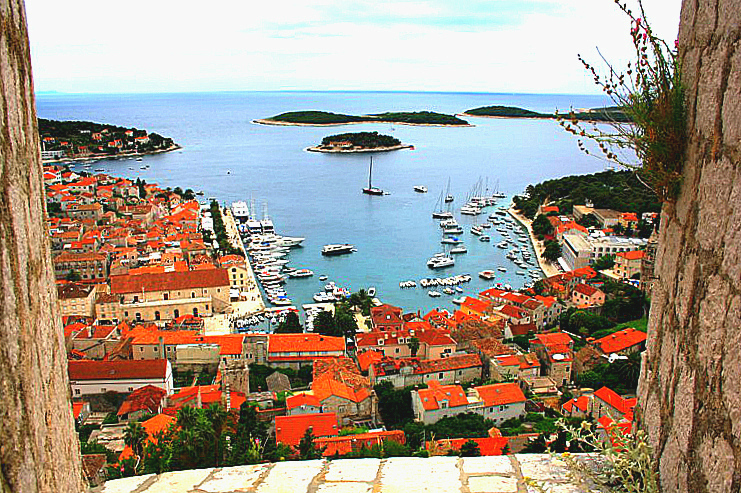
- More Hvar photos
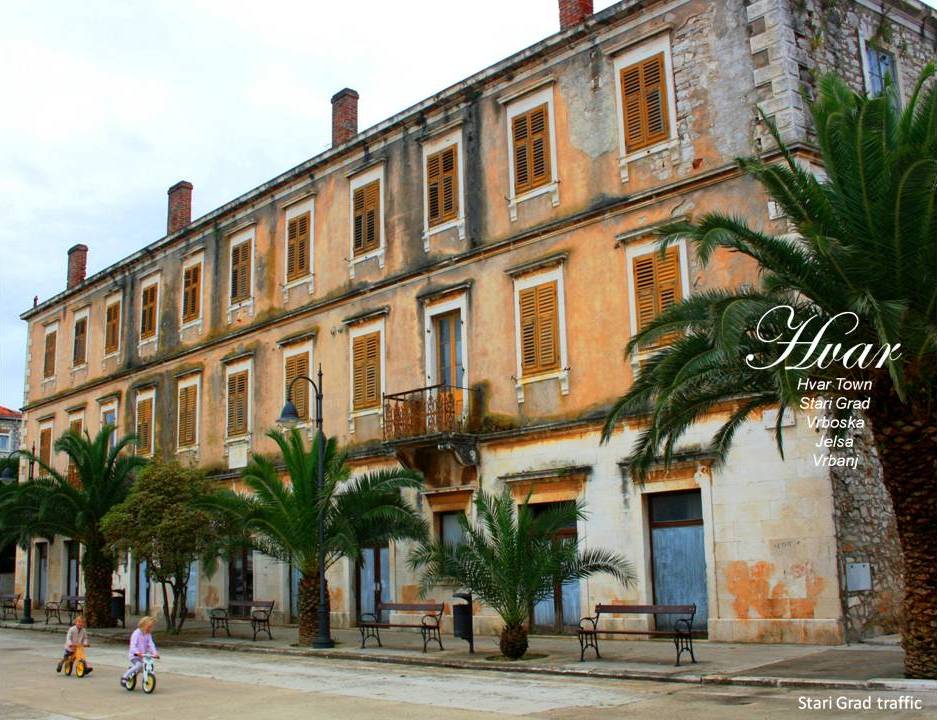 Stari Grad
Stari Grad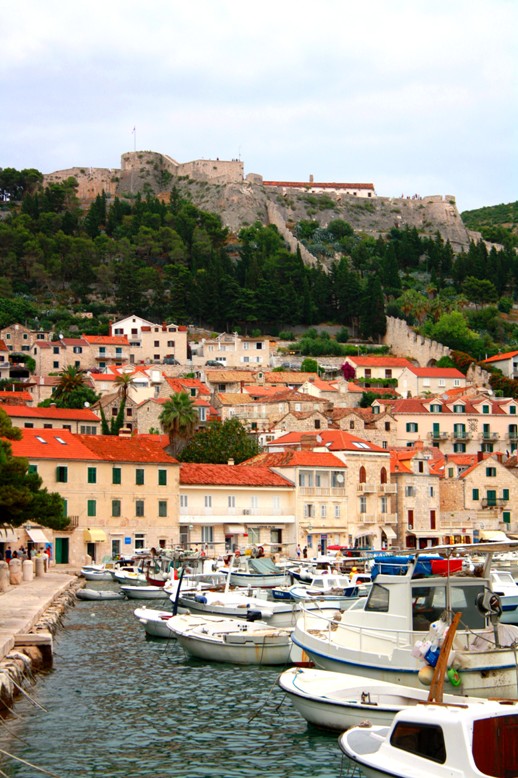 Waterside at Hvar town
Waterside at Hvar town Someone's backyard - Hvar town
Someone's backyard - Hvar town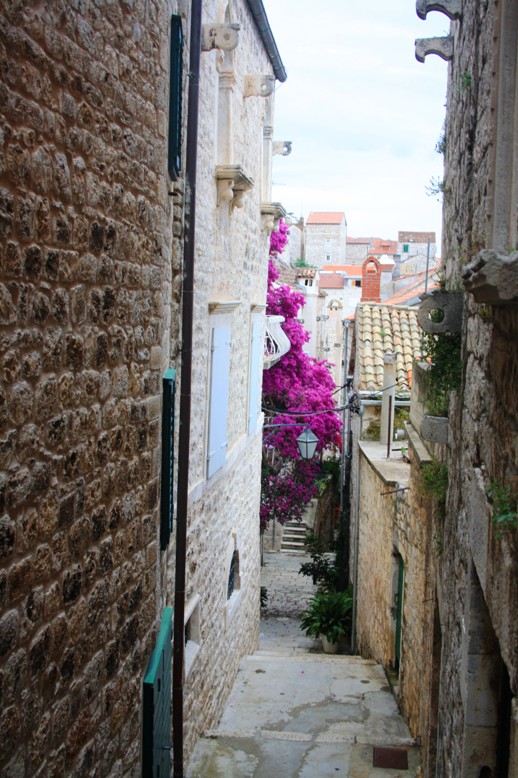 Clichéd shot down an alley at Hvar town
Clichéd shot down an alley at Hvar town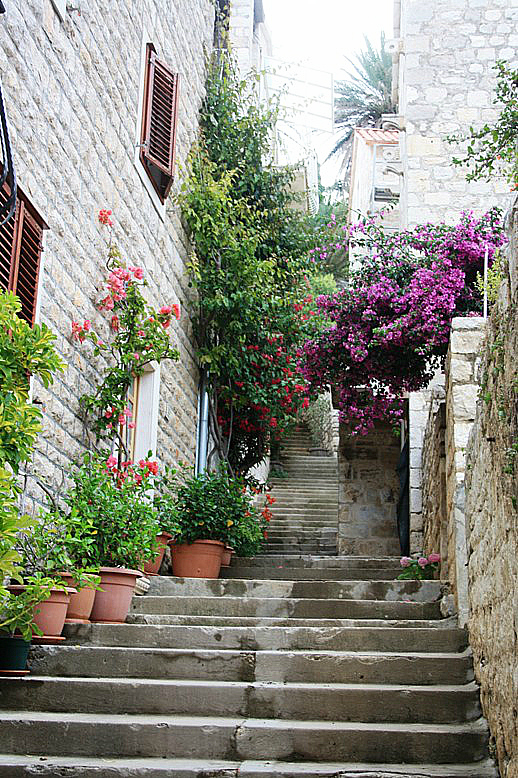 This must be even more clichéd then?
This must be even more clichéd then?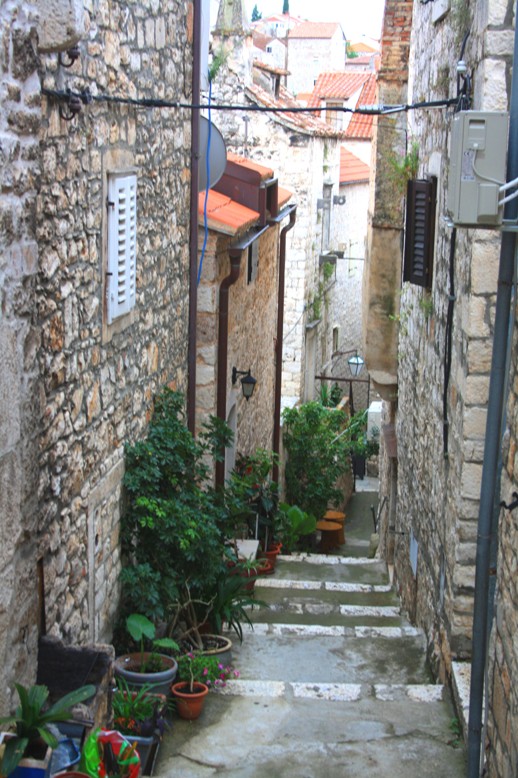 Enough already! Alleys, alleys, alleys. I had it with the far-too-many frikkin' Plitvice cascades FFS!
Enough already! Alleys, alleys, alleys. I had it with the far-too-many frikkin' Plitvice cascades FFS!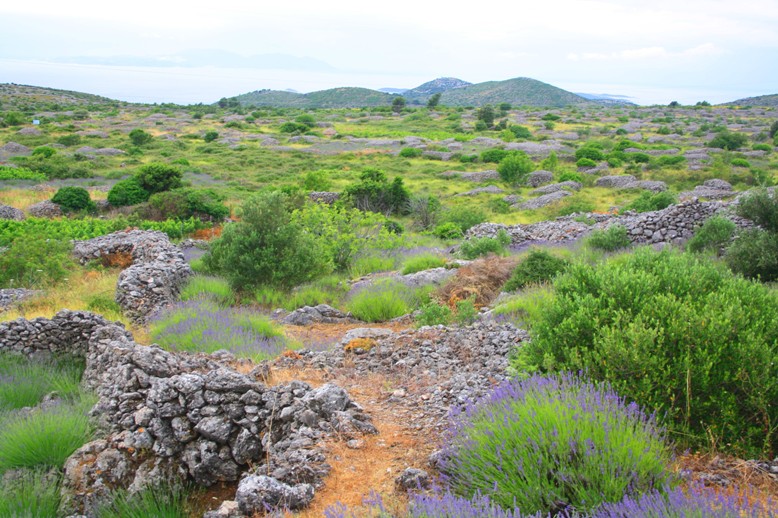 That's better
That's better On the old road over the mountains. Photo: Bruce
On the old road over the mountains. Photo: Bruce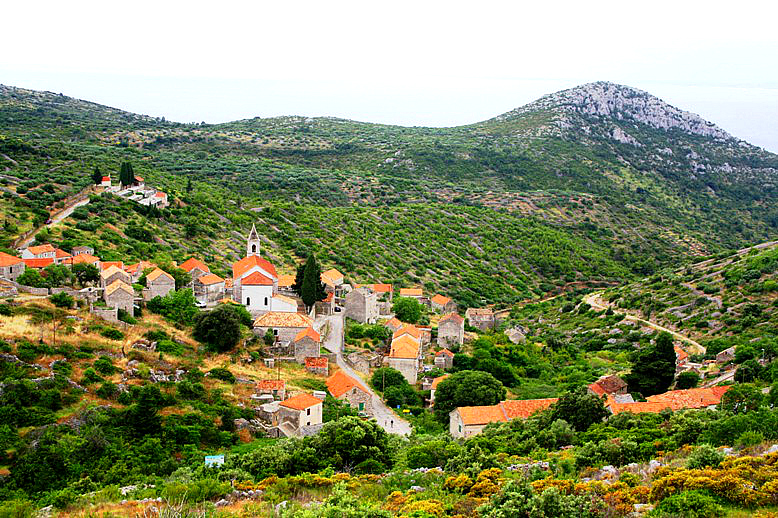 Backside of the island over the old road. Lots of lavendar everywhere
Backside of the island over the old road. Lots of lavendar everywhere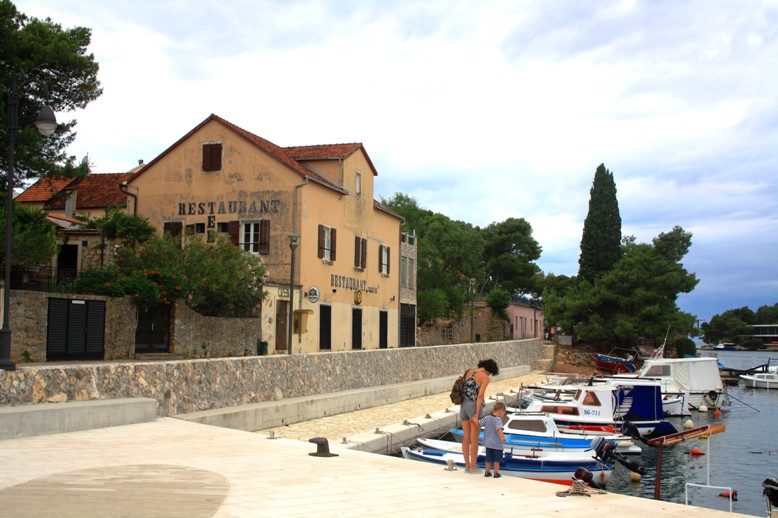 Stari Grad
Stari Grad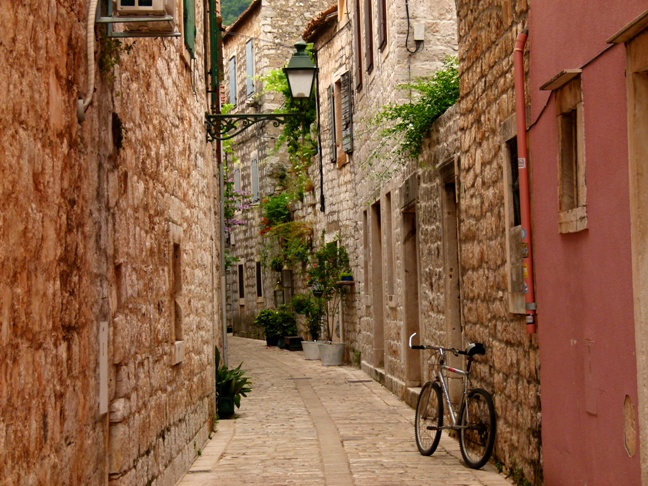 Stari Grad. Photo: Bruce
Stari Grad. Photo: Bruce More Stari Grad
More Stari Grad Yep....more Stari Grad
Yep....more Stari Grad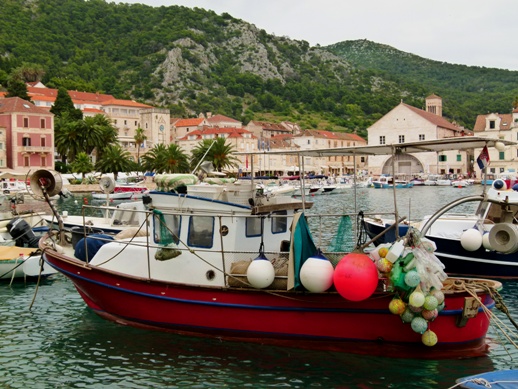 Hvar Town harbour. Photo: Bruce
Hvar Town harbour. Photo: Bruce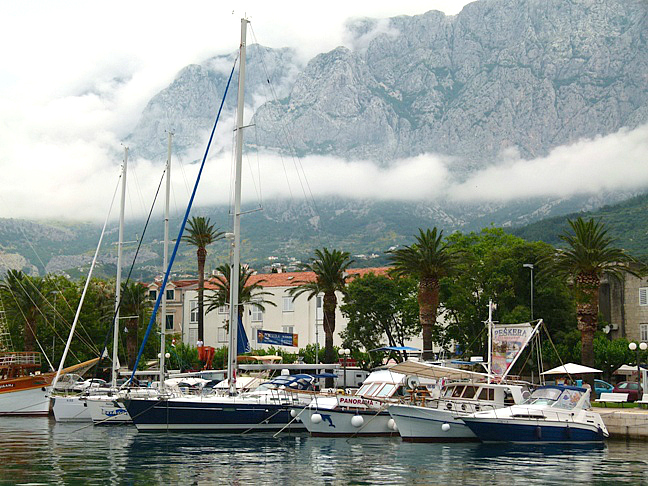 The port at Hvar Town and its mountain backdrop. Photo: Bruce
The port at Hvar Town and its mountain backdrop. Photo: Bruce Hvar Town alleyway. Photo: Bruce
Hvar Town alleyway. Photo: Bruce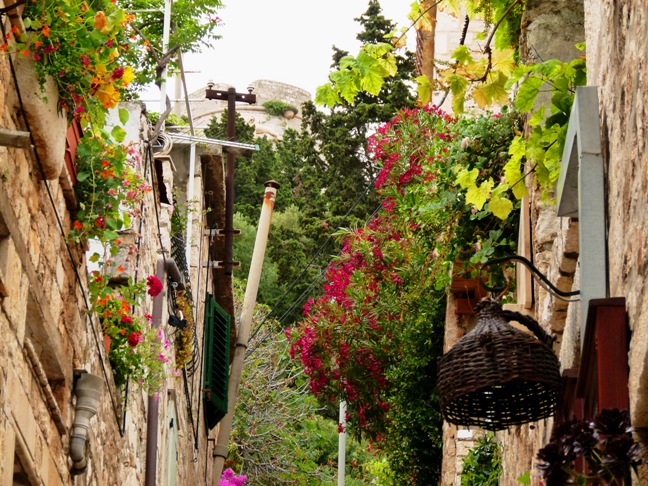 Hvar Town - the Venetian fortress from a backstreet. Photo: Bruce
Hvar Town - the Venetian fortress from a backstreet. Photo: Bruce The fortress above Hvar town. Photo: Bruce
The fortress above Hvar town. Photo: Bruce
An hour from Split by fast Jadrolinija ferry the weather changed from stinking hot to cool, overcast and drizzley just as we left the very ordinary beach at Split for the far better aquatic destination of Hvar. The Venetian-era buildings at the port in Hvar town shone in the wet and restored our faith in Croatia's charm after some disappointment with Split.
The town is overlooked by Venetian fortifications built in the 1700s to protect Venice's trade interests. Stari Grad and other towns on the other side of the island are easily reached over an old, windy mountain road or through a new tunnel if speed is more important than scenery. A hired maxi-taxi with George the cabbie proved to be a cost-effective way to see the island - split (no pun intended) the cost 6 ways and it was pretty cheap and George, as a native, knew his way around.
Dubrovnik
Bucket List Rating 


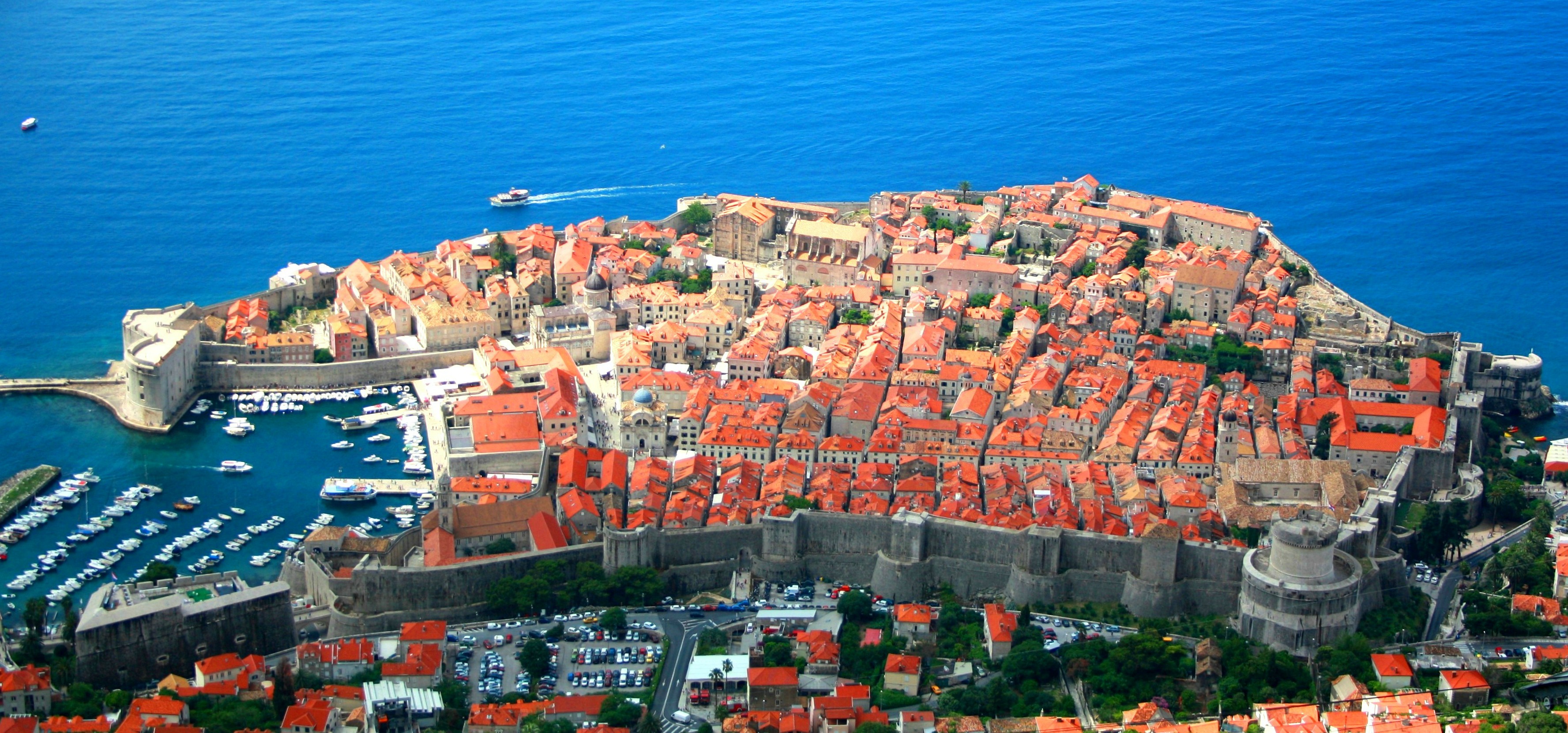
- More Dubrovnik photos
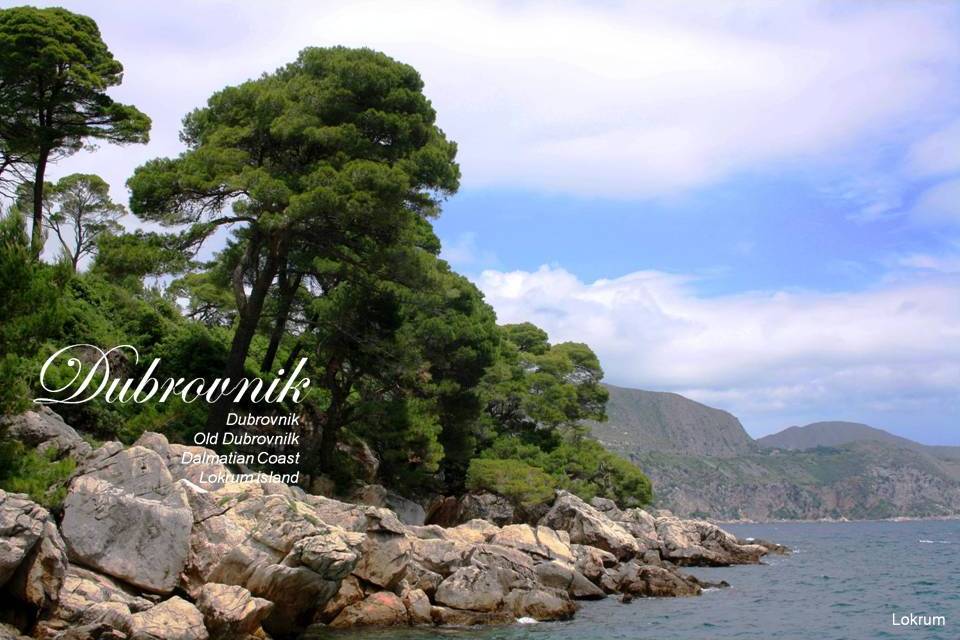 Lokrum islandn
Lokrum islandn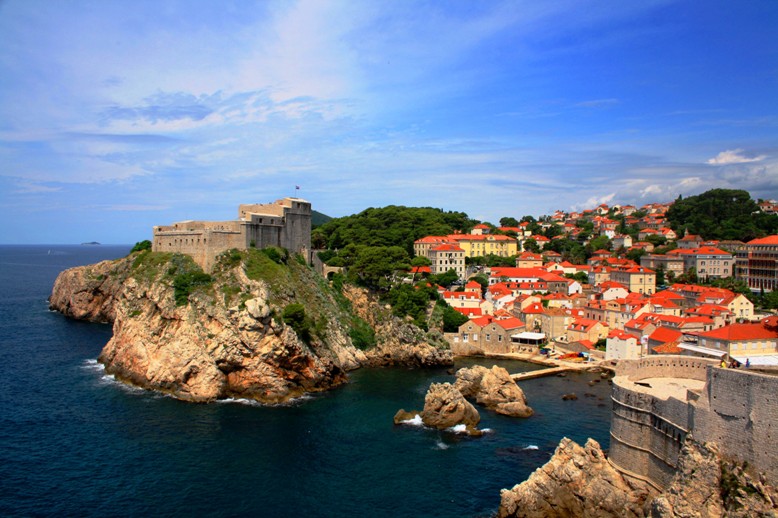 Medieval fortress taken from the fortified walls of the town
Medieval fortress taken from the fortified walls of the town The walls surround the entire old town and provide a walkway to circumnavigate it and from which to sticky beak into the inhabitants' backyards. That must really annoy them.
The walls surround the entire old town and provide a walkway to circumnavigate it and from which to sticky beak into the inhabitants' backyards. That must really annoy them.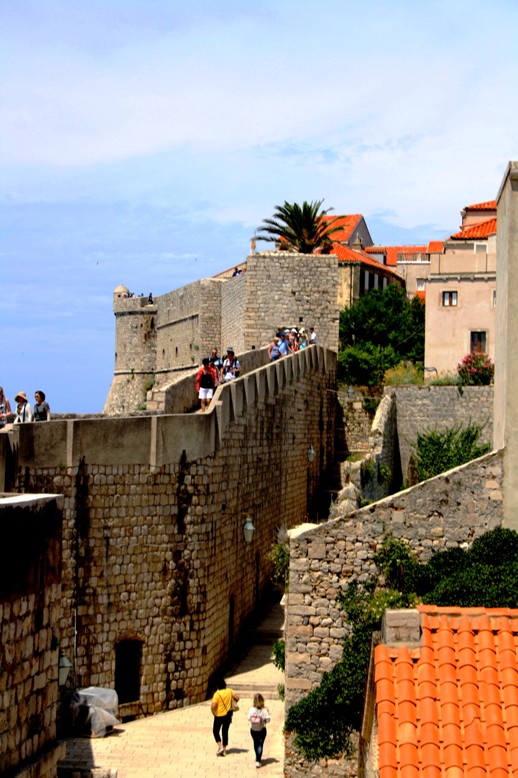 You can annoy the locals too by wandering around their houses at ground level
You can annoy the locals too by wandering around their houses at ground level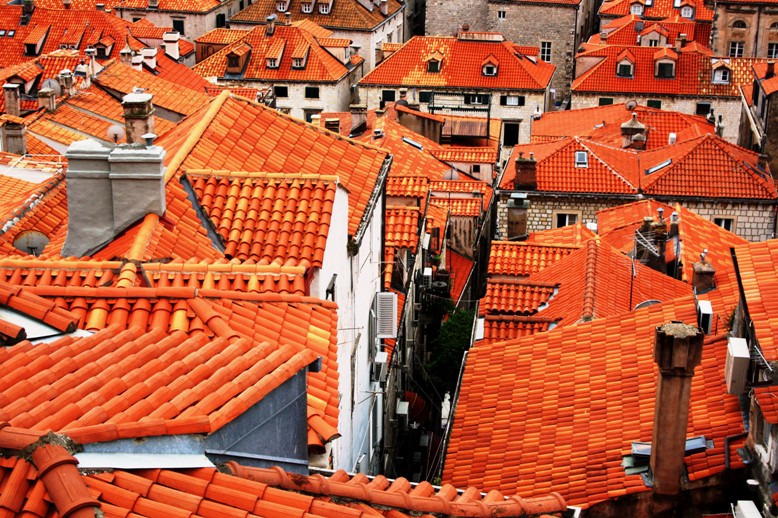 There's lots of shots of red tiled roofs
There's lots of shots of red tiled roofs Some with bells
Some with bells Some with pointy bits
Some with pointy bits Some with bell towers
Some with bell towers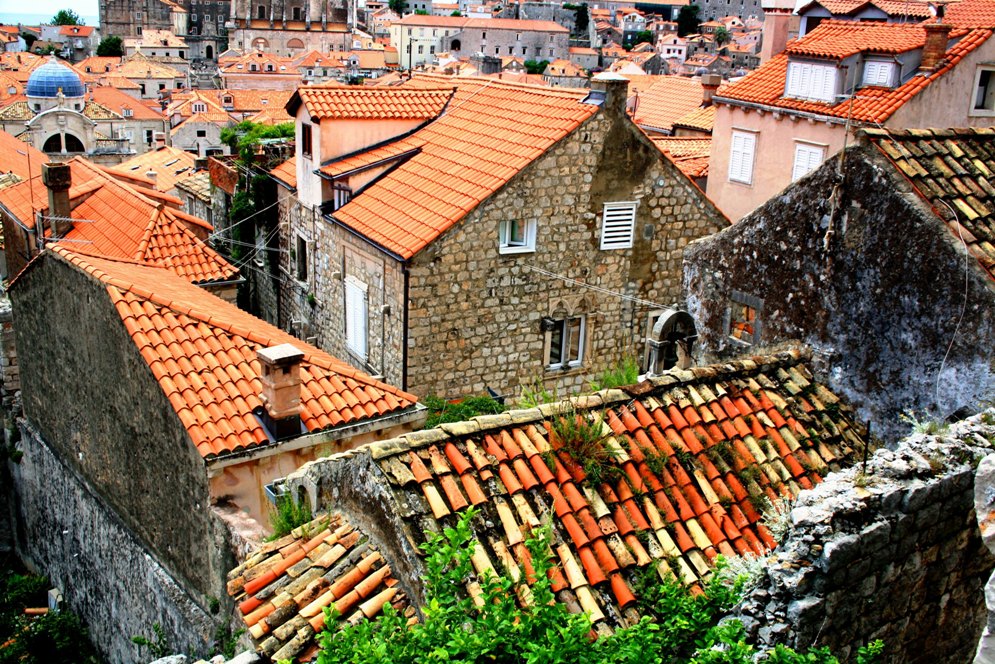 Some more rustic than others
Some more rustic than others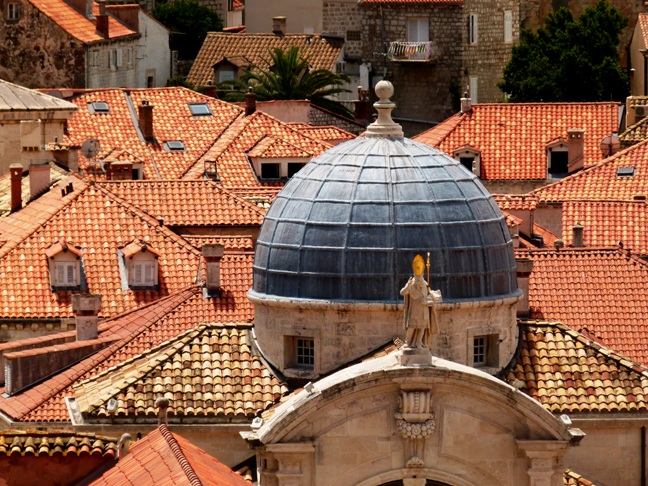 Some with domes. Photo: Bruce
Some with domes. Photo: Bruce An alley from Bruce's perspective
An alley from Bruce's perspective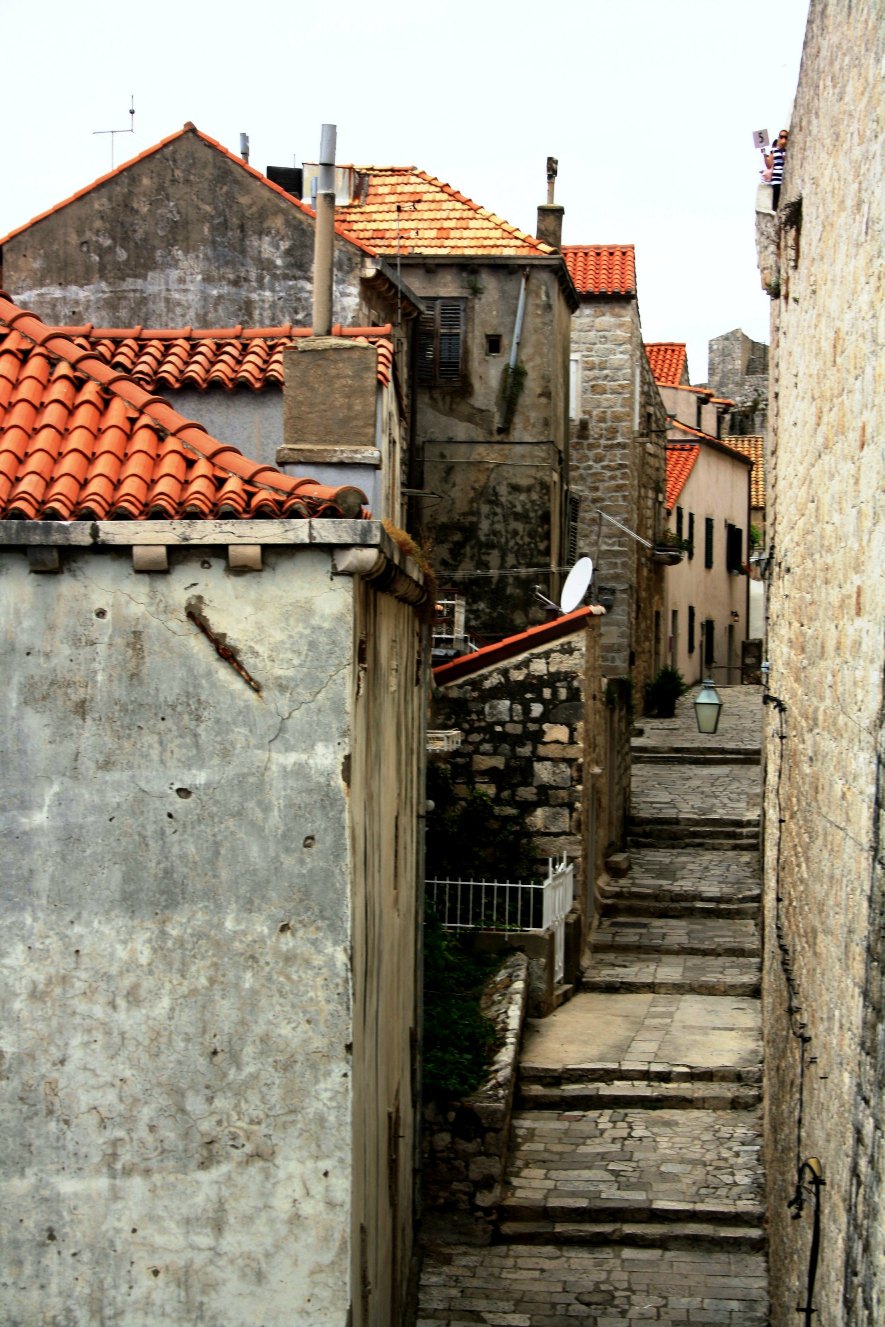 Oh FFS - a shot down another fkkn alley!
Oh FFS - a shot down another fkkn alley!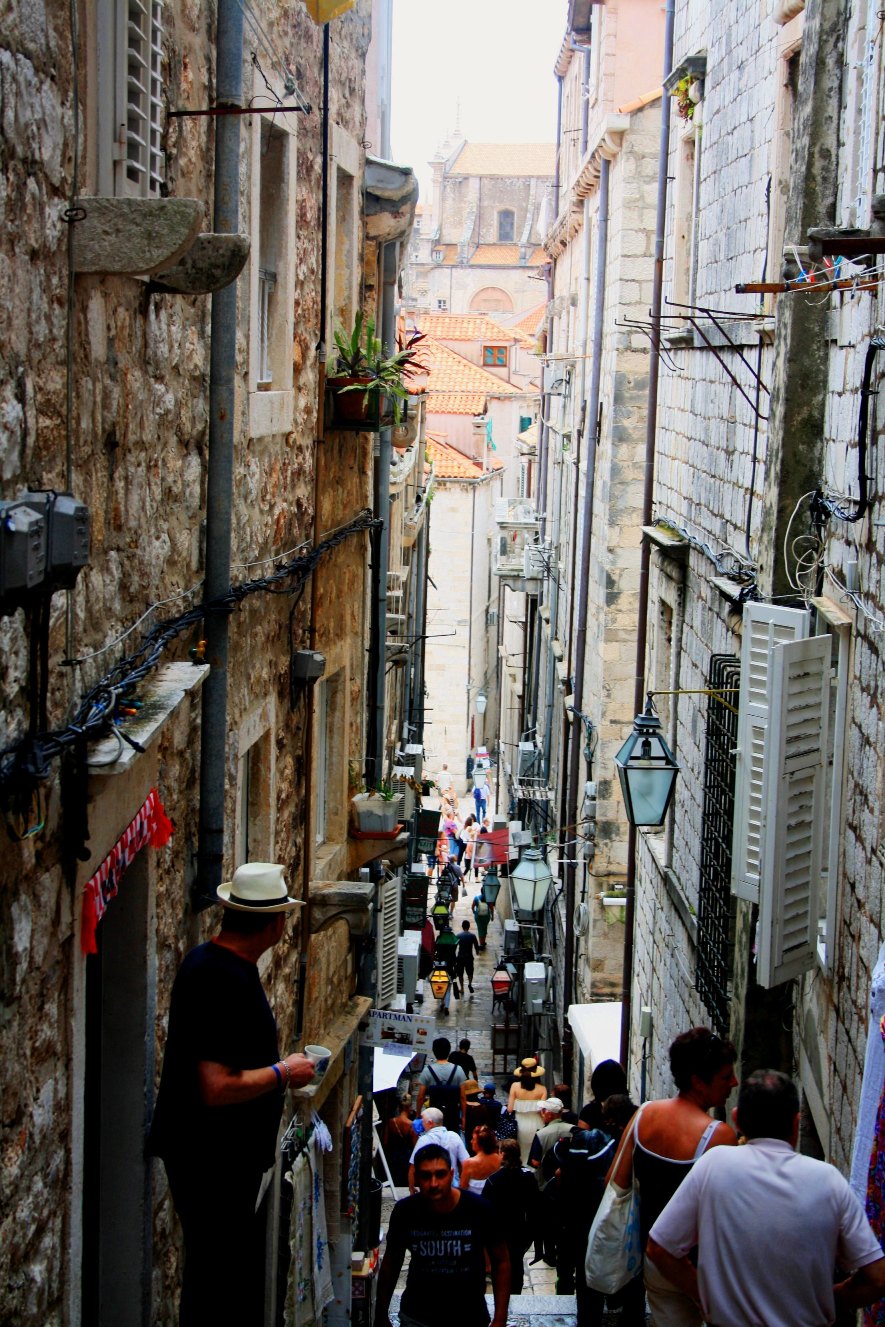 Enough!
Enough!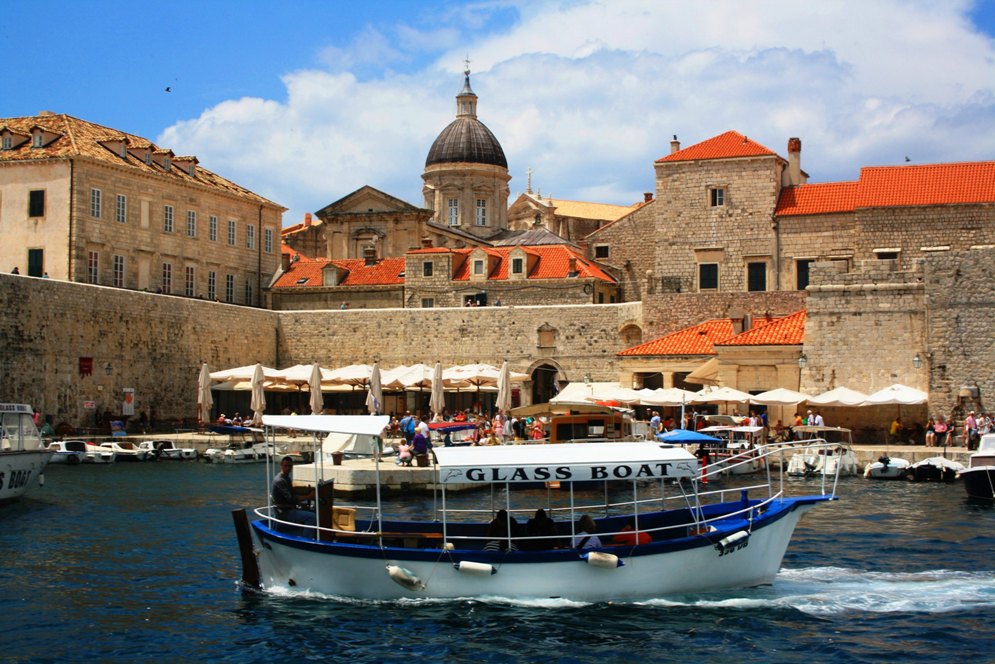 Boat rides - ferries and glass-bottomed boats galore.
Boat rides - ferries and glass-bottomed boats galore.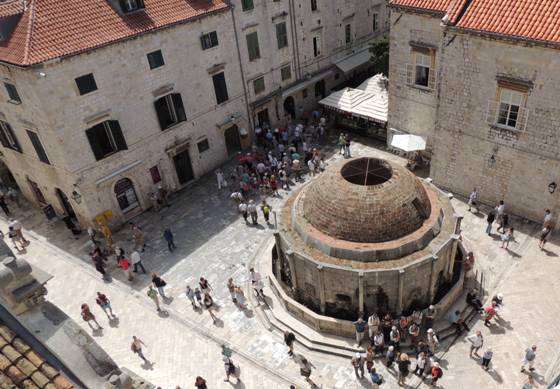 Communal well Photo: Chris
Communal well Photo: Chris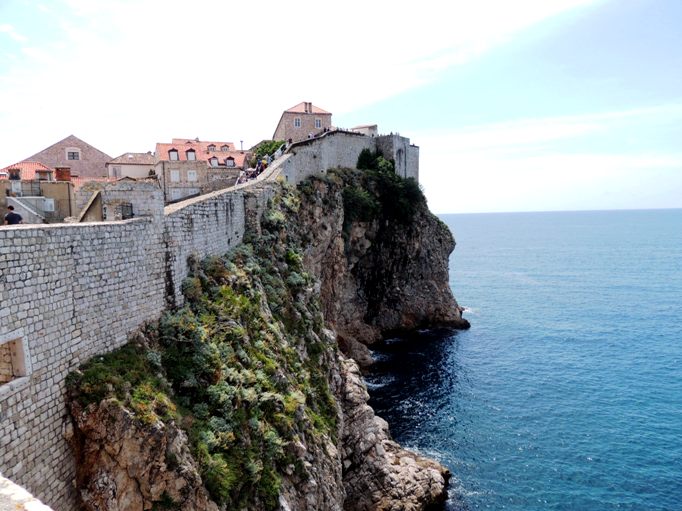 Photo: Chris
Photo: Chris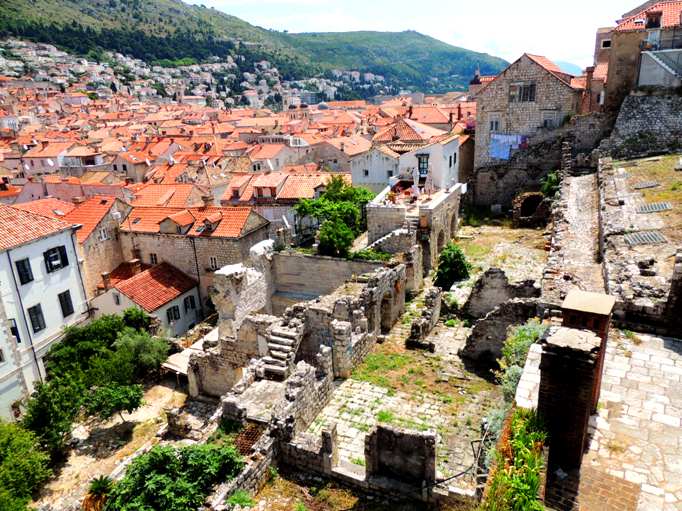 Photo: Chris
Photo: Chris Photo: Chris
Photo: Chris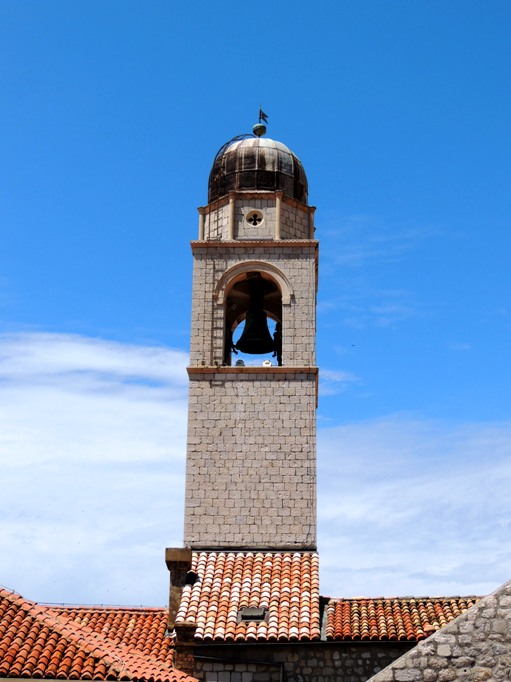 Photo: Chris
Photo: Chris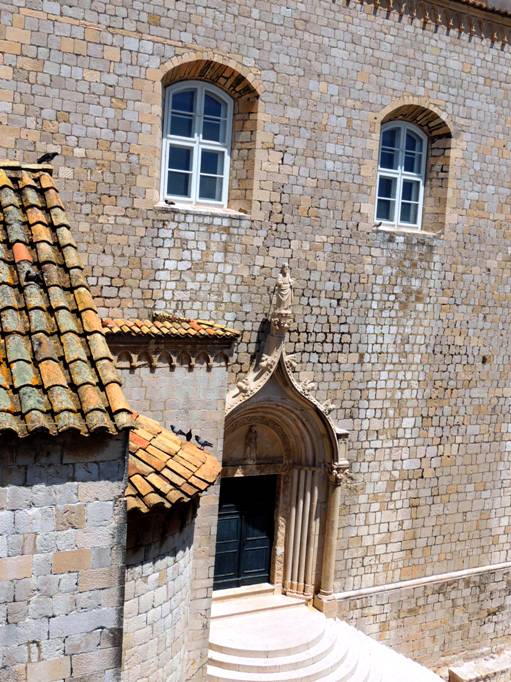 Photo: Chris
Photo: Chris Photo: Chris
Photo: Chris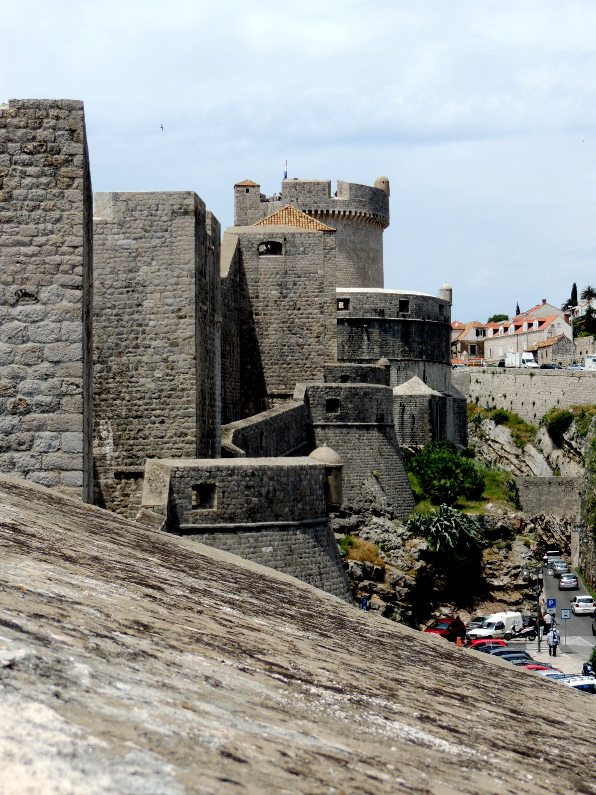 Photo: Chris
Photo: Chris Photo: Chris
Photo: Chris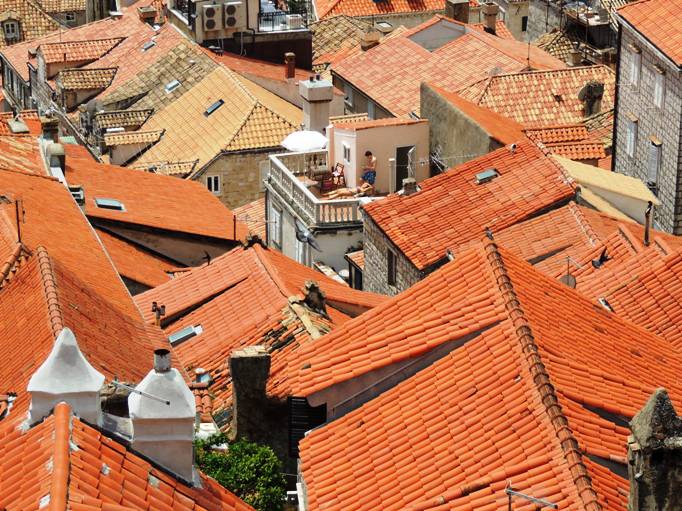 Spot the sunbathers. Photo: Chris
Spot the sunbathers. Photo: Chris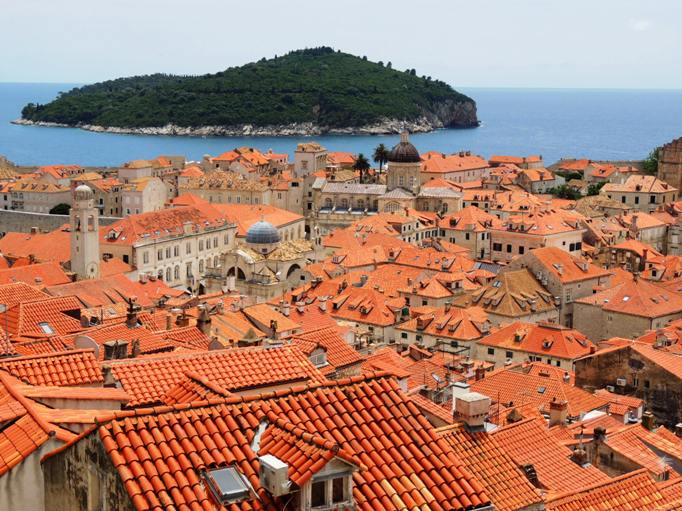 Photo: Chris
Photo: Chris
That's more like it! This is what i expected Split to be like. The old fortified town of Dubrovnik is a real treasure, while the city surrounding it is pleasant, clean, tree-lined and easy to get around.
Dubrovnik is a long but pleasant drive from Split with the good-quality, 2 lane coastal highway of Route 8 winding between headlands and the intersecting coves each typically with its village of Italianate buildings and the few resorty towns such as Podgora and Makarska (for a smoko, coffees and snot blocks on the waterfront esplanade). Very similar scenery to the Cinque Terre and Amalfi Coast of Italy - steep limestone rises high out of the sea, rugged and sparse on the upper reaches, covered by pines, olive groves and vinyards on the lower slopes; except for an interim inland diversion through flat, well-watered plains and orchards near a place called Ploce after which the highway returns to the coast after a windy climb back over the mountains.
Dubrovnik is separated from the rest of Croatia by a short Bosnian coast that took only about 15 minutes to pass through. Can't really claim to have been to Bosnia given the brevity of the transit; the same with Slovenia on the way in. While the Croatia/Slovenia border had border posts they were unmanned and we drove straight through, the Bosnia/Croatia border crossings are manned but offialdom is minimal - upon request the Bosnian official looked for passport stamps to mark our brief visit but couldn't find any - they're not used.
Travel notes
- Croation wine - cheap and very drinkable. $6AUD for a litre of palatable local red is a bargain. Wine lists, being in Croation, read like a roll call of tennis players. Rosé Tomic anyone?
- Not one junk-food outlet seen. How do they keep them out? Croatians seem to be a pretty fit lot - no obese types with flubbedas and muffin tops on display were spotted except for those on obvious tourists. Distinct lack of malls and shopping super-centres. Give me the atmosphere of Croatian farmers' markets over our sterile, over-packaged supermarkets any day.
- Generous portions of fresh food everywhere we ate. Prices are similar to home, but Croatians don't scrimp on the servings - including the chocolate-sauced steak that Bruce ordered in Dubrovnik and still stubbornly insists was delicious. Croatians do great snot-blocks (vanilla slices) that I had always thought were as Aussie as lamingtons.
- Thank god for the open spaces of Australia. Europe is overcrowded. Croatia less so, except for the tourist hot spots.
(Australia: 3 people per square km - same as for Iceland. Croatia: 76. EU average: 114.). The photos of Italy and Croatia suggest that
they're not crowded places, but that's misleading. We were there in the off-season, and a lot of photos are early morning. Most places
were very crowded, particularly if a cruise ship or two were in port when the tourist hot-spots could be shoulder-to-shoulder.
We live on an over-crowded planet. There are now 17 billion humans - more than the total of all other generations added together. Yet, there are some who seem to accept massed humanity as normal. I was talking about Croatia with a Croatian work colleague who seemed to be miffed at my descriptions of the pleasant open spaces and wooded mountains of his home country - sniffly claiming that Croatia had lots of crowded places as if that was a good thing. Weird perspective. - A liberal interpretation of road rules - they're treated as suggestions (the Italians are madder than the Croatians) but there was little aggro, others' behaviours seem to be accepted as normal and expected.
- Our pre-visit expectations of Croatia and the Balkans was partly formed from memories of news coverage of events during the break-up of Yugosalvia in the 1990s, the nasty massacres in Kosovo at that time and the looney carry-on of Croation and Serbian fans at various Australian Open tennis matches in Melbourne over the years. After visting Croatia though, any negative stereotyping in our minds has faded away.

